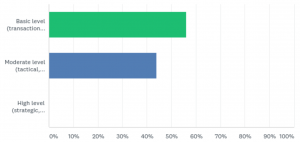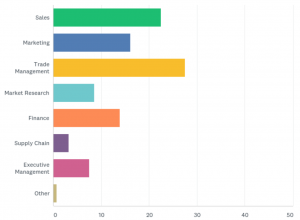by: Gary Karp
November 28, 2018
A recent study by Pentallect, “Best Practices: Strategic Use of Data Analytics”, confirmed the need for continuous improvement in the use of data analytics and identified significant differences in how various companies are using data analytics.
If you haven’t yet formally mapped out your plans and strategies to improve your data analytics capabilities…. the time has come!
Why has the time come to increase focus on data analytics?
- The amount and types of data available is at an all-time high and are almost certain to keep expanding.
- Customer “requests” continue unabated, decisions are being requested more quickly and “data/fact-based” decisions support better responses.
- A relatively small percentage of manufacturers aggressively mine and strategically use data analytics to improve their results.
- Third party data tools (TPM, location tools, shipment data, dashboards) are more readily available and are of increased quality and capability.
- Over half of manufacturer respondents to a recent survey identify their data analytic capabilities at a “BASIC LEVEL” (ouch), while 45% rated their capabilities at moderate. ZERO respondents considered themselves to be at a high level.
Historically, data management efforts have evolved from the need to manage trade spending, which for most FS manufacturers is the second largest line on the P&L after cost of goods. These efforts have expanded as more and more data has become available and data tools and the analytical mindset evolved (and continues to evolve).
Trade management, according to the latest study, still requires the most time and resources, but the following survey responses clearly show sales and marketing are gaining focus and share of data analysis efforts.
The recent study also revealed that leading manufacturers believe that better information/data leads to better decision making which leads to better results.
Following are just a few examples of how manufacturers reported using data. Data analysis is being used is to:
- Align the organization with strategically based KPIs and to track/measure performance according to those KPIs
- Inform the organization enabling fact-based decision making, including budget, strategic and/or tactical adjustments.
- Align the organization behind a single source of data.
- Justify or deny potential investments.
- Increase credibility, effectiveness and efficiency of analysis (time, resources).
- Better identify/measure each function’s activity, effectiveness and contribution.
- Identify new opportunities and or situations needing focus (ex: underperforming products, customers, white space etc.)
Looking forward:
The strategic use of data will become increasingly more important. A good example of the importance of data management is the recent Gregory Packaging – Foodbuy LLC lawsuit. Data and the critical insights it enabled were key determining factors in the decision.
Is your competition improving their data analytics capabilities?
The magnitude and significance of data analytics ensures that manufacturers will likely look to continually identify/update strategies to account for the new challenges.
The recent Pentallect study, in fact, confirms that many manufacturers across a wide variety of categories are indeed planning to upgrade data analytic capabilities.
Final thoughts.
Survey respondents believed that better analysis and development of insights from data leads to better decisions and therefore better results.
If you would like to discuss the data analytics study and potential implications in greater detail, please contact us.
*****Last Chance to register for the December 4th Pentallect Distribution Summit:
Click here to register for this year’s event and see the agenda of what’s in store, including a lineup of dynamic speakers including: distributors, GPOs, brokers and online marketers (from Buyers Edge Platform, WEBstaurant Store, US Foods, DMA, Acosta, etc …) plus Pentallect perspectives to provide fresh and timely insights into evolving industry trends.




